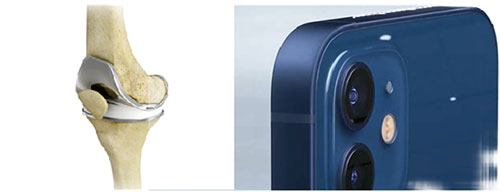
What do total knee replacement and the newest IPhones have in common? Both are taking advantage of a new technology called augmented reality (AR). Your latest IPhone has multiple cameras on it, one of which helps determine distances and measurement. This allows for “virtual” placement of objects on your phone screen and shows you anticipated final products.
Augmented reality is an interactive experience of a real-world environment where the objects that reside in the real world are enhanced by computer-generated perceptual information (1). Our nation’s leading hospitals have started to use this technology and the outcomes as compared to other technologies, such as robotics, will be studied.
It makes sense that computers and the real-time information they provide will become an increasing part of surgery. With most arthroscopic procedures being viewed on a two-dimensional screen, AR can add visual information to the screen to help the surgeon identify pathology quickly. Spine surgeons have shown accuracy of screw placement increases with the use of AR (2).
In total joint replacement, information can be provided to the surgeon on a device called a heads up display (HUD) similar to some cars and planes. This allows the surgeon to see values and measurements on goggles that they wear, letting them adjust the “virtual” position of implants with great precision. This will ideally translate into a better final product and position of your total hip and knee replacement.
The future is now, and it looks bright.











